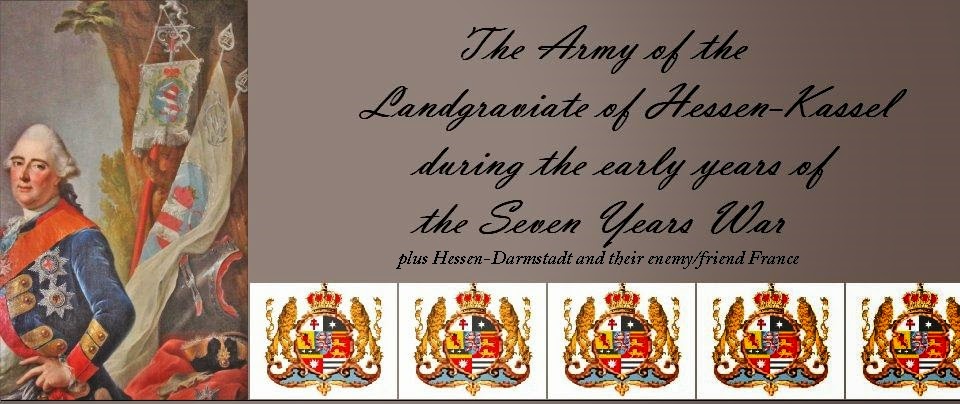In 1760 the four Reiter regiments of cavalry were converted by the new Landgraf to cuirassiers although, according to Kronoskaf, they were not given cuirasses until after the end of the war. In my army they have them. Actually you would be hard-pressed to find miniature figures without the cuirasse and the nearest example would be 1806 Prussian cuirassiers although the bicorne would need to be replaced.
This is quite a pretty regiment in my view and the Black Hussar figures are lovely. You even get a choice with each figure of 4 different right arms.
I decided that the flags for this regiment shown on Kronoskaf were clearly pre-1760. There is a clue in a regimental plate (I would guess late 1760s to 1770s) for the Dragoon regiment Dalwigk as to what the cuirassier flags might have looked like. It is strange that all Hessian dragoons carried the swallow-tailed standard except for this Dalwigk which suggests that at some date the 4 cuirassier regiments might have been converted to dragoons. But I have no further information on this, suffice to say that the Dalwigk flag will form the basis of the new flags for the 4 Hessian cuirassier regiments. Stylistically, they fit in with my other Hessian flags.
In 1760 the four Reiter regiments of cavalry were converted by the new Landgraf to cuirassiers although, according to Kronoskaf, they were not given cuirasses until after the end of the war. In my army they have them. Actually you would be hard-pressed to find miniature figures without the cuirasse and the nearest example would be 1806 Prussian cuirassiers although the bicorne would need to be replaced.
This is quite a pretty regiment in my view and the Black Hussar figures are lovely. You even get a choice with each figure of 4 different right arms.
I decided that the flags for this regiment shown on Kronoskaf were clearly pre-1760. There is a clue in a regimental plate (I would guess late 1760s to 1770s) for the Dragoon regiment Dalwigk as to what the cuirassier flags might have looked like. It is strange that all Hessian dragoons carried the swallow-tailed standard except for this Dalwigk which suggests that at some date the 4 cuirassier regiments might have been converted to dragoons. But I have no further information on this, suffice to say that the Dalwigk flag will form the basis of the new flags for the 4 Hessian cuirassier regiments. Stylistically, they fit in with my other Hessian flags.






























